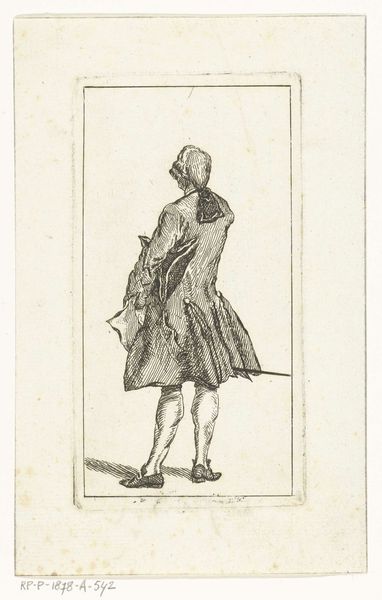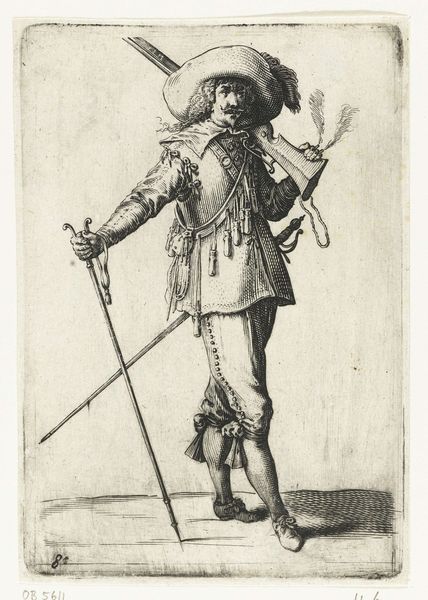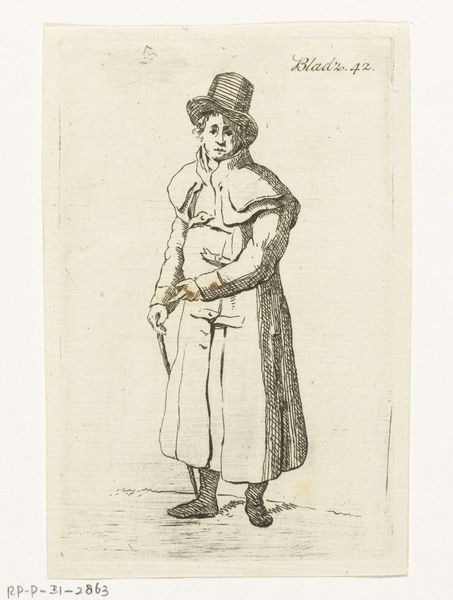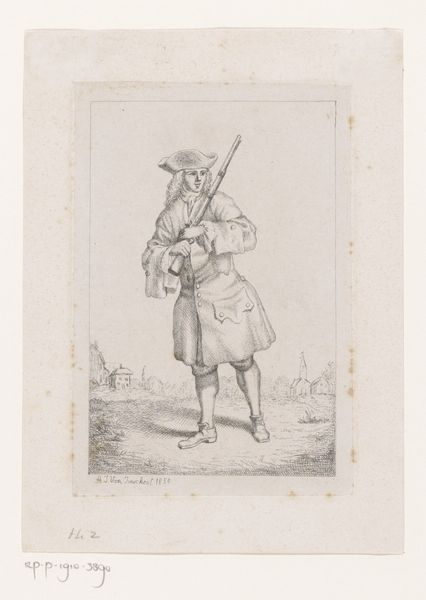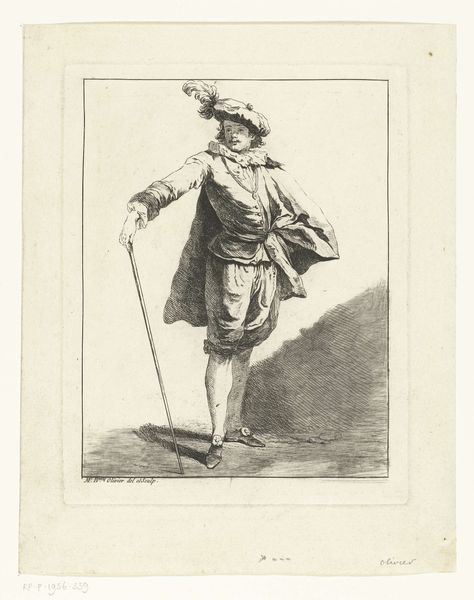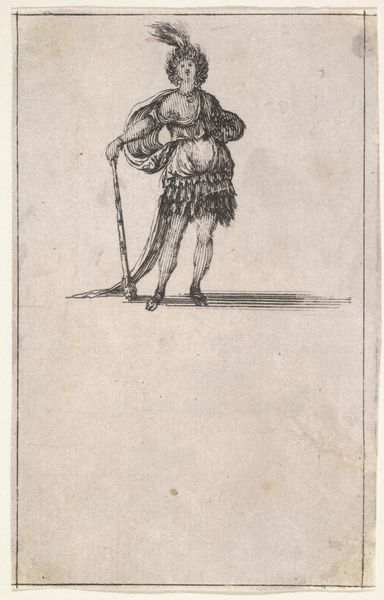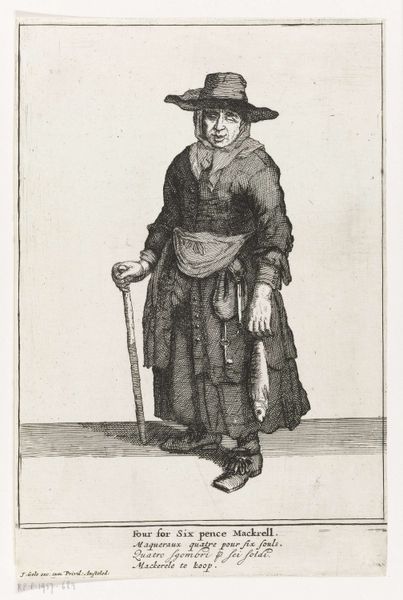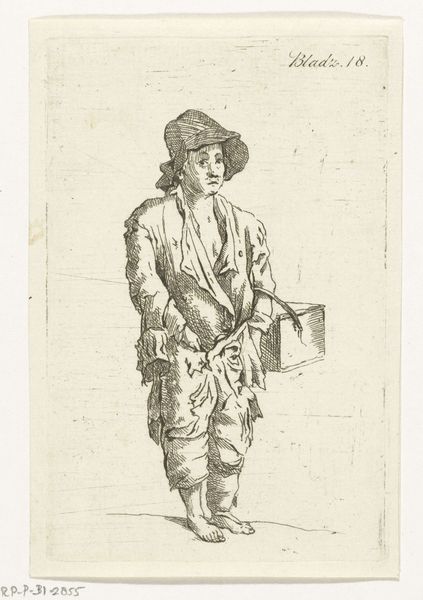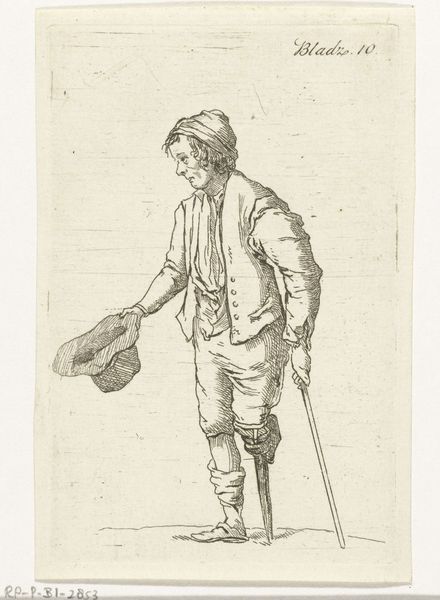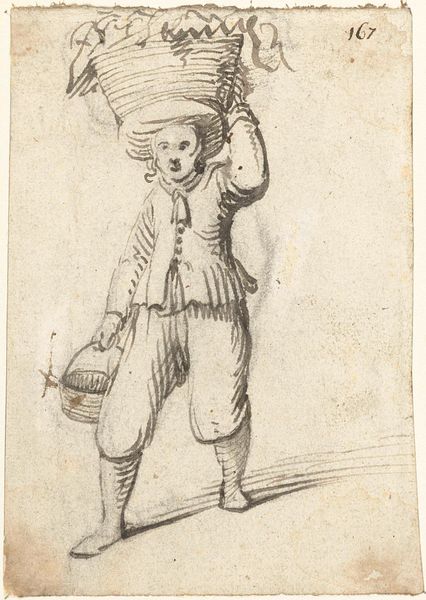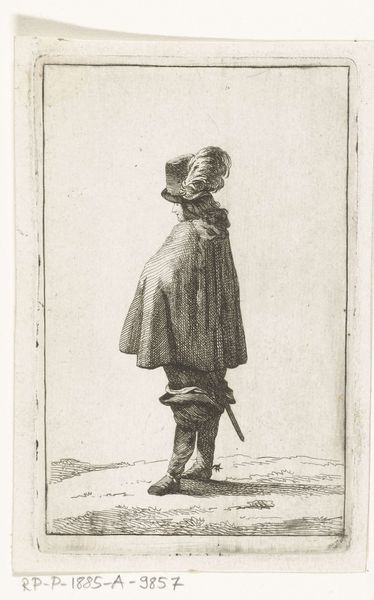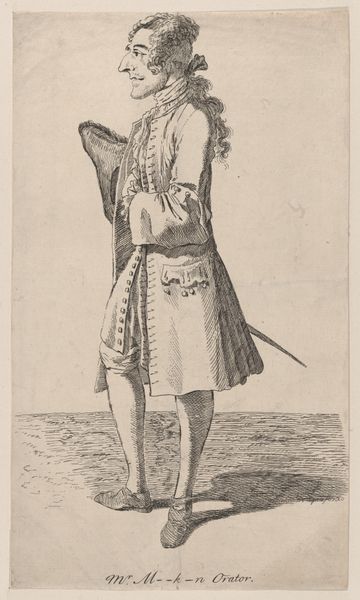
print, etching
#
portrait
#
neoclacissism
# print
#
etching
#
history-painting
#
realism
Dimensions: height 120 mm, width 80 mm
Copyright: Rijks Museum: Open Domain
Curator: This etching by Anthonie van den Bos, entitled "Standing Soldier with Rifle," likely created sometime between 1778 and 1838, strikes a surprisingly lighthearted tone despite its martial subject. Editor: It does, doesn't it? The crisp lines and rather dapper outfit give him an almost comical air. His stance seems awkward and a bit like a caricature, even before noting the rather absurd plume atop his hat. Curator: Look closer; van den Bos's dedication to detail is remarkable, especially considering this is a print. Notice the texture of his uniform, the intricate strapwork, and the precise way he's rendered the rifle. These details serve a documentary function. One could infer this level of realism points towards Neoclassical influences combined with burgeoning Realist trends. Editor: Yet the very act of producing a print undermines that singular aura of the "original." How do we value mass reproducibility with a hand crafted piece of art that depicts military forces in a historical moment? This makes me question the relationship between printmaking and patriotic propaganda! Curator: That’s a vital point. Prints such as this would have circulated widely. Think of this circulating print as the mass communications of its day. It shapes public opinion, it reinforces societal structure by way of the soldier and rifle being easily spread amongst the people, creating this visual echo. The accessibility becomes part of the meaning. Editor: Yes, precisely. But let’s also consider the materiality of the print itself. The choice of etching—the physical act of incising the image onto the plate, the labor, the controlled application of acid—it imbues the final product with an indexical quality, making you see the hands-on creation. Curator: A connection to process over preciousness. A very good observation. What appears light initially reveals layers of societal weight and the materiality of creation itself. Editor: Exactly, moving it out of purely formal readings opens up further dialogues of class, process and consumption. I keep thinking, too, about how such prints might be viewed now within a post-colonial context. Curator: The work has definitely given me food for thought and some questions of my own. I am left wondering who saw these? And under what sociopolitical environments.
Comments
No comments
Be the first to comment and join the conversation on the ultimate creative platform.
